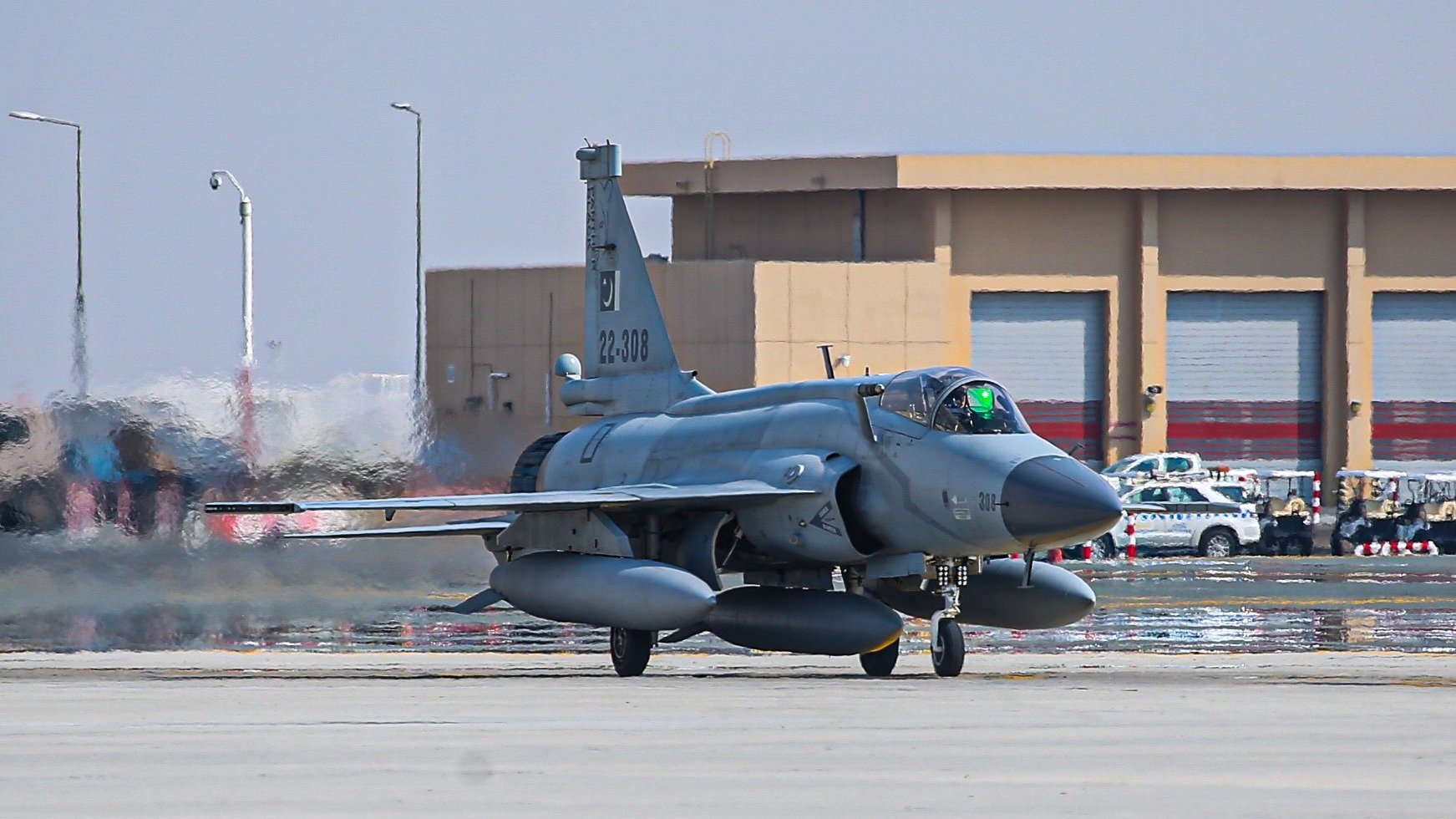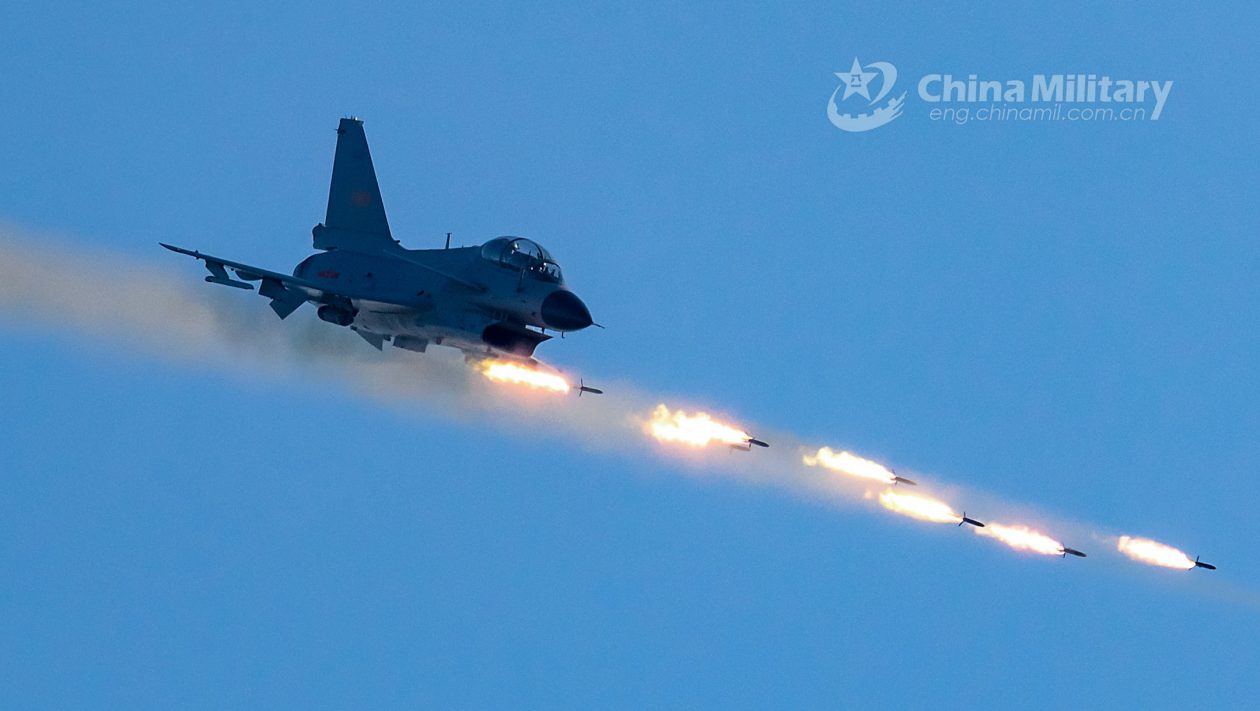The JF-17 ‘Thunder’ or FC-1 Xiaolong (Fierce Dragon) is said to be a cross between the Soviet MiG-21 and American F-16. Its development stemmed from Pakistan’s need to modernize its aging fleet of fighter jets while cutting down its dependence on the West.
When Islamabad and Beijing were reeling under sanctions from the West, the two countries joined hands to JF-17.
The aircraft undertook its first flight in 2003 and has become the backbone of the Pakistan Air Force (PAF). The jet is meant to replace Pakistan’s aging fleet of Nanchang A-5, Chengdu F-7, and Mirage III and V attack and fighter jets.
It is one of the most widely operated Chinese combat jets, but China has not inducted it into its inventory.
The JF-17 has not been designed to compete with the F-22 but is a cheap multi-role fighter jet that can offer developing countries freedom from the strings attached to defense sales from Western countries. The fighter jet is priced between $15 million and $25 million each, considerably cheaper than every other fourth-generation jet on the market.
“This is not an aircraft that is designed to compete head-to-head with the F-22, so it doesn’t need the most sophisticated engines and parts,” Heath said. “It’s a cheap multirole budget aircraft that is suitable and probably most appealing to developing countries that are looking for a basic aircraft to either bomb their own people, like insurgents or to carry out basic defense against similar-type countries,” Timothy Heath, a senior international and defense researcher at the Rand Corporation think tank, was quoted saying.
The PAF officially inducted its first JF-17 squadron on 18 February 2010. The PAF aims to acquire up to 250 jets. In December 2013, the production of the next-generation JF-17 Thunder fighters began at the Pakistan Aeronautical Complex facility in Kamra, Punjab.
The aircraft has undergone many enhancements, including an air-to-air refueling capability, better avionics, and electronic warfare capability. In 2015, it was announced that a Block III JF-17 Thunder and a two-seat variant were to be built with AESA radar and a helmet-mounted display (HMD).
On October 3rd, 2019, Jane’s Defence Weekly reported that the first Block III JF-17 Thunder had been unveiled in a ceremony at the Pakistan Aeronautical Complex (PAC) in Kamra.
No JF-17s For China?
The Joint Fighter JF-17 has developed from China’s experience reverse engineering MiG-21 and Pakistan’s experience flying F-16s. It has been deployed operationally and exported to Myanmar and Nigeria. Deals have been signed with Iraq and Azerbaijan to supply the fighter jet. But the glaring question remains why China has refrained from inducting the aircraft.

Apart from the fact that the JF-17 was developed to cater to Pakistan’s security needs, China has veered away from shorter-range fighter jets and towards larger, multi-role fighter jets like the J-10.
With a vast expanse to defend, China needs modern fighter jets with extended range capable of carrying more weapons than JF-17. JF-17 has seven hard points compared to eleven of J-10.
J-10 ‘Vigorous Dragon’ is much larger than JF-17.
The JF-17 is ideal for Pakistan, which requires easy-to-maintain aircraft. China’s fleet of J-10 and J-20 gives it a sophisticated arsenal to secure its vast air space. Pakistan has also inducted J-10s into its inventory, although in smaller numbers.
The J-10C model is considered comparable to the 4.5-generation fighters. The biggest addition has been the AESA radar, the cornerstone of modern-day air warfare.
The J-10C has also improved its stealth by using non-reflective composite materials, reducing its visibility on radar. This decreased the range at which the J-10C could be detected and targeted.
The J-10C is armed with long-range PL-15 radar-guided air-to-air missiles, which outrange the US Air Force’s AIM-120 D. The J-10s can carry long-range anti-radiation missiles designed to target air defense radars for both at sea and land.
Medium-weight combat aircraft J-10, along with lightweight multi-role fighter JF-17, is well suited for Pakistan. Islamabad doesn’t need JF-17 to penetrate the Indian borders.
With most of the Indian air bases located within 50-60 kilometers of the border, for anything further, Pakistan’s missiles can do the job. JF-17 was developed to fight insurgents within its borders and drop bombs on its neighbors, and it does the job at a low cost.

J-10 has a conventional delta wing design with canards, yet it boasts impressive maneuverability. The J-10 fighter is powered by a single Saturn AL-31FN series 3 engine, providing 13.5 tons of thrust, and has a top speed of Mach 2.2.
The latest variant, J-10C, is powered by a single WS-10 Taihang turbofan engine with a thrust of 13,500 kgf (29,800 lbf). The engine has afterburners and provides good acceleration and maneuverability. The aircraft also has a digital fly-by-wire flight control system, which makes it highly maneuverable and responsive.
The Vigorous Dragon has a range of 2,940 km (with external fuel tanks) and can stay in the air for up to 3 hours and 30 minutes. The PLAAF fighter can reach speeds of up to Mach 2.2 (1,700 mph, 2,735 km/h) at high altitude and has a maximum altitude of 60,000 feet (18,290 meters). The aircraft is also highly maneuverable at high speeds and can quickly change direction and altitude.
With high top speed, the J-10C can achieve faster speeds during combat maneuvers. The aircraft has a much lower radar cross-section than its earlier variants, enhancing its stealth capabilities.
The aircraft is also known for its integrated electronic warfare suite, which provides advanced jamming and countermeasures capabilities, making it more effective in electronic warfare scenarios.
- Ritu Sharma has been a journalist for over a decade, writing on defense, foreign affairs, and nuclear technology.
- The author can be reached at ritu.sharma (at) mail.com
- Follow EurAsian Times on Google News





